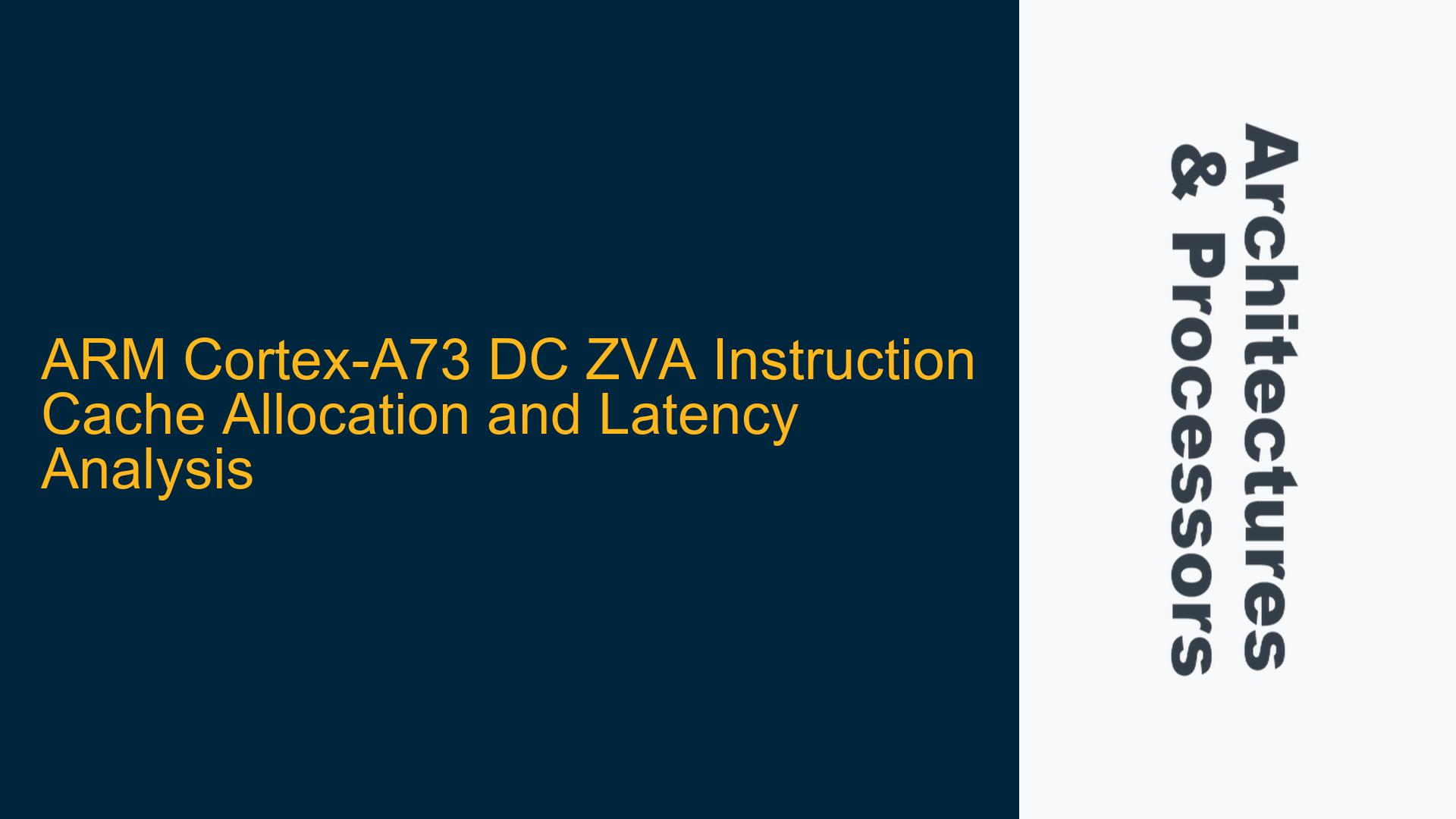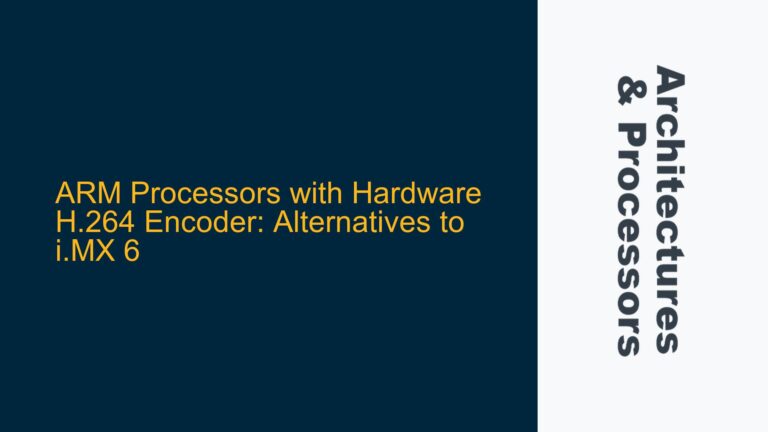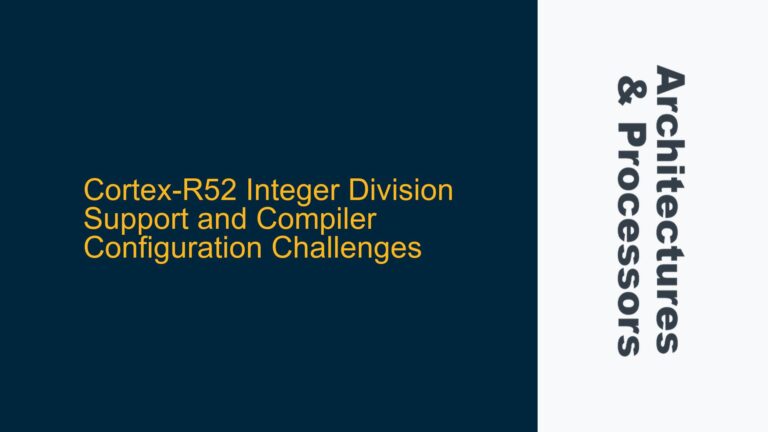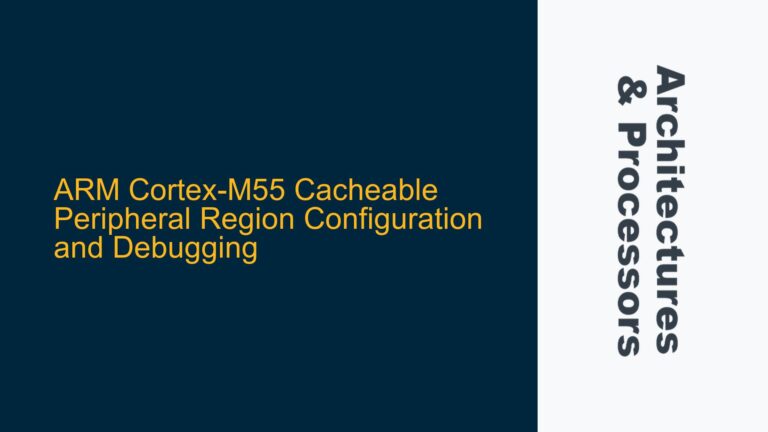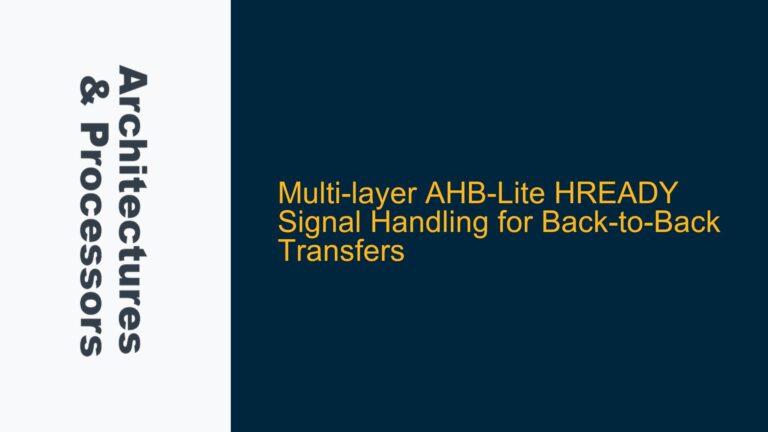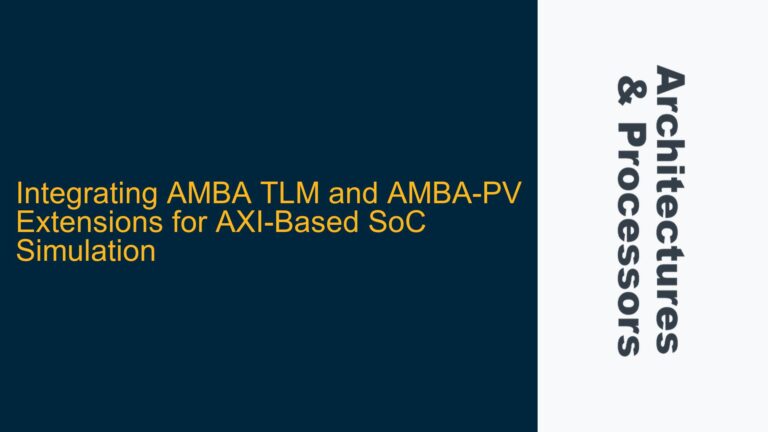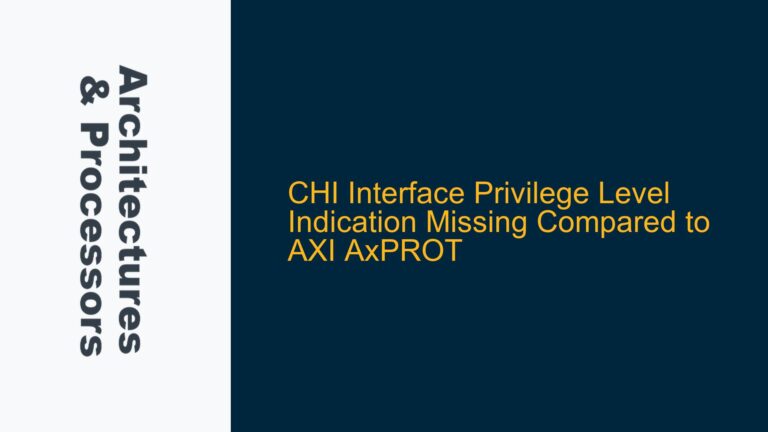DC ZVA Instruction Behavior and Cache Allocation on Cortex-A73
The Data Cache Zero by Virtual Address (DC ZVA) instruction in ARMv8-A architectures is designed to zero a block of memory efficiently. However, its interaction with the cache hierarchy, particularly on the Cortex-A73, is not explicitly detailed in the ARM architecture reference manuals. This ambiguity leads to questions about whether the DC ZVA instruction causes cache line allocations in the L1 or L2 caches and how its latency compares to standard cache and memory access operations.
The Cortex-A73, a high-performance processor core within the ARMv8-A family, implements a sophisticated cache hierarchy to optimize memory access latency and bandwidth. The L1 cache is typically split into separate instruction and data caches, while the L2 cache is unified. The behavior of the DC ZVA instruction in this context is critical for understanding its impact on system performance, especially in scenarios involving large memory zeroing operations.
When the DC ZVA instruction is executed, it writes zeros to a block of memory corresponding to the size of a cache line. The key question is whether this operation results in the allocation of a cache line in the L1 or L2 cache. The ARMv8-A architecture reference manual does not explicitly state whether the DC ZVA instruction causes cache line allocation, leaving this behavior implementation-defined. This lack of clarity necessitates empirical analysis to determine the actual behavior on specific processor implementations like the Cortex-A73.
Cache Line Allocation and Write Streaming Mode in DC ZVA
The Cortex-A73, like many modern processors, supports various cache allocation policies and write modes that can influence the behavior of memory operations. One such mode is write streaming, which is particularly relevant when dealing with large memory blocks. Write streaming mode is designed to optimize performance by avoiding unnecessary cache line allocations when large blocks of memory are written. This mode is especially beneficial in scenarios where the entire cache line will be overwritten, rendering the initial linefill operation redundant.
In the context of the DC ZVA instruction, write streaming mode can significantly impact whether cache lines are allocated. If the processor detects that a large block of memory is being zeroed, it may enter write streaming mode, bypassing the cache allocation for these writes. This behavior is consistent with the optimization goals of reducing cache pollution and improving power efficiency. However, the exact conditions under which the Cortex-A73 enters write streaming mode during DC ZVA execution are not explicitly documented, necessitating further investigation.
The interaction between the DC ZVA instruction and the cache hierarchy can be influenced by several factors, including the size of the memory block being zeroed, the current state of the cache, and the specific implementation details of the Cortex-A73. For instance, if the memory block being zeroed is small, the processor may still allocate cache lines to maintain coherence and reduce latency. Conversely, for larger blocks, the processor may prioritize bandwidth and power efficiency by avoiding cache allocations.
Analyzing DC ZVA Latency and Cache Behavior
To understand the behavior of the DC ZVA instruction on the Cortex-A73, it is essential to analyze its latency in comparison to standard cache and memory access operations. The latency of the DC ZVA instruction can provide insights into whether it is interacting with the cache hierarchy or directly accessing memory. In the provided code, the latency of the DC ZVA instruction was measured and compared to the latency of cache access (using the LDR instruction) and memory access (using the LDR instruction combined with the DC CIVAC instruction).
The results of the latency measurements indicate that the DC ZVA instruction has a latency of 21 nanoseconds, which is significantly higher than the cache access latency of 4 nanoseconds but much lower than the memory access latency of 210 nanoseconds. This intermediate latency suggests that the DC ZVA instruction is not purely a cache operation nor a direct memory operation. Instead, it likely involves a combination of cache and memory interactions, possibly influenced by the processor’s cache allocation policies and write streaming mode.
The higher latency of the DC ZVA instruction compared to cache access can be attributed to the additional overhead of zeroing the memory block and potentially updating the cache hierarchy. The lower latency compared to direct memory access indicates that the DC ZVA instruction is still benefiting from some level of cache interaction, possibly through partial cache line allocations or other optimizations.
Implementing Data Synchronization Barriers and Cache Management
To ensure accurate measurements and proper behavior of the DC ZVA instruction, it is crucial to implement appropriate data synchronization barriers and cache management techniques. Data synchronization barriers, such as the DSB (Data Synchronization Barrier) and ISB (Instruction Synchronization Barrier) instructions, are used to ensure that memory operations are completed in the correct order and that the cache is in a consistent state before proceeding with subsequent instructions.
In the provided code, DSB and ISB instructions are used before and after the DC ZVA instruction to ensure that all previous memory operations are completed and that the cache is properly synchronized. This is particularly important when measuring the latency of the DC ZVA instruction, as any outstanding memory operations or cache inconsistencies could skew the results.
Cache management instructions, such as DC CIVAC (Data Cache Clean and Invalidate by Virtual Address to Point of Coherency), are used to ensure that the cache is in a known state before performing latency measurements. In the provided code, the DC CIVAC instruction is used to clean and invalidate the cache lines corresponding to the memory addresses being accessed, ensuring that the subsequent memory access measurements are not influenced by stale cache data.
Optimizing DC ZVA Usage for Performance and Power Efficiency
Understanding the behavior of the DC ZVA instruction on the Cortex-A73 is essential for optimizing its usage in performance-critical and power-sensitive applications. When zeroing large blocks of memory, it is important to consider the potential impact on cache pollution and power consumption. If the processor enters write streaming mode during DC ZVA execution, it can avoid unnecessary cache line allocations, reducing cache pollution and improving power efficiency.
However, for smaller memory blocks, the overhead of entering write streaming mode may outweigh the benefits, and it may be more efficient to allow cache line allocations. In such cases, the DC ZVA instruction can still provide performance benefits by efficiently zeroing the memory block without requiring explicit software loops.
To optimize the usage of the DC ZVA instruction, developers should consider the size of the memory block being zeroed and the specific requirements of their application. For large memory blocks, it may be beneficial to use the DC ZVA instruction in conjunction with other optimizations, such as prefetching or parallelization, to further improve performance. For smaller memory blocks, the DC ZVA instruction can be used directly, taking advantage of its efficient zeroing capabilities without significant overhead.
Conclusion
The DC ZVA instruction on the ARM Cortex-A73 presents a complex interaction with the cache hierarchy, influenced by factors such as cache allocation policies, write streaming mode, and the size of the memory block being zeroed. Empirical analysis, as demonstrated in the provided code, is essential for understanding the behavior of the DC ZVA instruction and its impact on system performance.
By implementing appropriate data synchronization barriers and cache management techniques, developers can ensure accurate measurements and proper behavior of the DC ZVA instruction. Optimizing the usage of the DC ZVA instruction for different memory block sizes and application requirements can lead to significant performance and power efficiency improvements in ARMv8-A based systems.
In summary, the DC ZVA instruction is a powerful tool for efficiently zeroing memory blocks, but its behavior on the Cortex-A73 requires careful consideration of cache interactions and optimization strategies. By leveraging the insights gained from latency measurements and cache behavior analysis, developers can make informed decisions about when and how to use the DC ZVA instruction to achieve the best possible performance and power efficiency in their applications.
